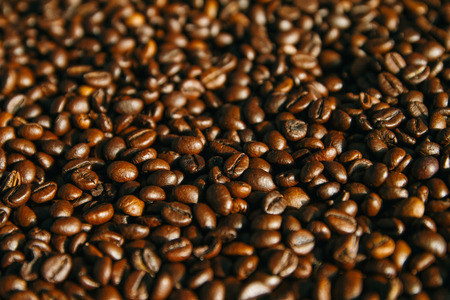1. Introduction to Fair Trade Coffee
When you pick up a bag of coffee labeled “fair trade” at your local grocery store or favorite café, you might wonder what those words really mean. In simple terms, fair trade coffee is more than just a label—it’s a movement focused on better prices, decent working conditions, and sustainable farming for the people who grow our coffee beans. These principles are especially relevant in the U.S., where coffee is a daily staple for millions and concerns about ethical consumption are on the rise.
What Does Fair Trade Coffee Mean?
Fair trade coffee refers to coffee that has been certified to meet specific social, economic, and environmental standards set by organizations like Fair Trade USA or Fairtrade International. This certification ensures that farmers receive a minimum price for their beans and extra premiums to invest in their communities or improve their farming methods.
Core Principles of Fair Trade Coffee
| Principle | Description |
|---|---|
| Fair Pricing | Guarantees farmers a stable and living wage regardless of market fluctuations. |
| Community Development | Premiums fund schools, health clinics, and infrastructure in farming areas. |
| Environmental Sustainability | Encourages eco-friendly practices like organic farming and reduced pesticide use. |
| Worker Rights | Supports safe working conditions and prohibits child labor. |
Why Is Fair Trade Coffee Important in the U.S.?
The United States is one of the largest consumers of coffee in the world. With this high demand comes an opportunity—and responsibility—to support ethical sourcing. Many American consumers are becoming more aware of the impact their purchases have on people and the planet. Choosing fair trade coffee allows them to align their buying habits with their values by supporting farmers and encouraging environmentally responsible agriculture. Plus, many U.S. coffee shops and retailers now highlight fair trade options, making it easier than ever for consumers to make informed decisions.
2. Traditional vs. Fair Trade Coffee Farming Practices
When it comes to coffee farming, not all beans are grown the same way. The difference between traditional (conventional) and fair trade coffee farming isn’t just about price or labels—it’s about the environment too. Let’s break down how these two approaches stack up, especially in terms of their ecological impact.
What Does Traditional Coffee Farming Look Like?
Traditional coffee farming is usually focused on maximizing yield and profit. This often means large-scale monoculture farms where coffee plants are grown in rows under full sun. Chemical fertilizers and pesticides are commonly used to control pests and boost growth. These methods can be hard on the land, leading to problems like soil erosion, loss of biodiversity, and water pollution.
How Is Fair Trade Different?
Fair trade certifications set specific standards for how coffee should be grown. While rules can vary a bit between certifying organizations, fair trade generally encourages or requires more sustainable methods. Farmers are incentivized to use fewer chemicals, protect native plants and animals, and manage water responsibly. Shade-grown coffee—where coffee is planted under a canopy of trees—is often promoted because it helps preserve habitats for birds and other wildlife.
Main Differences at a Glance
| Practice | Traditional Coffee Farming | Fair Trade Coffee Farming |
|---|---|---|
| Chemical Use | High; frequent use of synthetic pesticides and fertilizers | Limited; promotes natural pest control and organic options |
| Shade Cover | Often removed to increase yields (full sun) | Encouraged; shade trees preserved or planted |
| Biodiversity | Low; monocultures dominate | Higher; mixed crops and local species protected |
| Soil Health | Risk of erosion and nutrient depletion | Soil conservation practices required/recommended |
| Water Management | Potential for runoff and contamination | Efforts made to protect waterways and reduce waste |
The Bottom Line for the Environment
The biggest takeaway is that fair trade coffee farming isn’t just about fair wages—it’s also about caring for the land. By encouraging eco-friendly practices, fair trade aims to create healthier farms that last longer and support both people and nature.

3. Sustainable Agriculture and Ecosystem Benefits
Fair trade coffee farming isn’t just about better prices for farmers—it’s also about protecting the environment and supporting communities. Let’s take a closer look at how this approach helps promote sustainable agriculture, encourages biodiversity, and leads to healthier ecosystems.
How Fair Trade Coffee Supports Sustainable Agriculture
Fair trade standards encourage coffee farmers to use eco-friendly methods that help preserve natural resources. These practices often include:
- Organic fertilizers: Reducing reliance on chemical pesticides and synthetic fertilizers helps protect soil and water quality.
- Shade-grown coffee: Growing coffee under tree canopies mimics natural forests and reduces the need for deforestation.
- Water conservation: Efficient irrigation and water recycling protect local water supplies and reduce runoff pollution.
Sustainable Farming Practices: A Quick Comparison
| Practice | Fair Trade Coffee Farms | Conventional Coffee Farms |
|---|---|---|
| Pesticide Use | Limited, eco-friendly options | Frequent, chemical-based |
| Soil Management | Composting & crop rotation | Monoculture, less composting |
| Biodiversity Support | Trees & native plants maintained | Trees often removed for space |
| Water Use | Conservation & recycling emphasized | Inefficient irrigation common |
Biodiversity in Fair Trade Coffee Farms
Biodiversity means having a variety of plants, animals, and insects living together. Fair trade farms often support higher biodiversity because they avoid clearing forests and use shade trees. This creates habitats for birds, pollinators, and even small mammals. In fact, shaded coffee farms can provide homes for over 200 bird species—far more than sun-grown coffee plantations.
The Role of Shade Trees in Coffee Farming
- Prevent soil erosion: Tree roots hold soil in place during heavy rains.
- Create wildlife habitats: Birds, butterflies, and other animals find food and shelter.
- Natural pest control: Birds eat bugs that might otherwise damage crops.
- Improve air quality: Trees capture carbon dioxide and release oxygen.
Healthier Ecosystems Through Fair Trade Practices
Sustainable farming doesn’t just benefit the farm—it helps the whole ecosystem. Healthier soils mean cleaner rivers downstream. More pollinators lead to better harvests for everyone in the area. When farmers avoid harsh chemicals, they protect their own health as well as their communities. All these benefits add up to a more resilient landscape that supports people, plants, and animals alike.
4. Carbon Footprint and Climate Change
When it comes to coffee farming, the carbon footprint is a big deal. Coffee production creates greenhouse gases at many stages—from planting and harvesting to processing and shipping beans around the world. Let’s take a look at how fair trade practices can influence these emissions and help fight climate change.
How Does Fair Trade Coffee Farming Reduce Carbon Emissions?
Fair trade coffee farming focuses on environmentally friendly methods. Many fair trade cooperatives encourage or require farmers to use shade-grown techniques, organic fertilizers, and less chemical-intensive pest control. These changes can lower the amount of greenhouse gases released into the atmosphere.
Main Differences in Farming Practices
| Traditional Coffee Farming | Fair Trade Coffee Farming |
|---|---|
| Heavy use of chemical fertilizers and pesticides | Promotes organic inputs and natural pest control |
| Often relies on monoculture (one crop only) | Encourages biodiversity with shade trees and mixed crops |
| Clears land, which can lead to deforestation | Supports reforestation and protects existing forests |
The Role of Shade-Grown Coffee in Lowering Carbon Footprint
Shade-grown coffee means planting coffee under a canopy of native trees. This method not only supports wildlife but also helps store carbon in both trees and soil. More trees = more carbon captured from the air, making this practice a win for climate health.
Transportation and Processing: Less Waste, Lower Emissions
Fair trade organizations often invest in local processing facilities powered by renewable energy or improved technology that uses less water and energy. They also work to minimize waste during transportation by using more efficient shipping methods or even offsetting emissions when possible.
Can Fair Trade Really Make a Difference?
No single cup of coffee will stop climate change, but fair trade farms can set an example. By focusing on earth-friendly farming, supporting reforestation, and promoting better resource management, they show that coffee production doesn’t have to be harmful to our planet.
5. Fair Trade Coffee: Challenges and Limitations
Environmental Challenges for Fair Trade Coffee Farmers
Fair trade coffee is often seen as a win-win for farmers, the environment, and conscious consumers. However, growing coffee in an environmentally friendly way comes with real challenges—especially when farmers try to scale up sustainable practices.
Main Barriers to Scaling Sustainable Practices
| Challenge | Description | Impact on Environment |
|---|---|---|
| Limited Resources | Many fair trade farmers operate on a small scale with limited access to funds, technology, or training needed for eco-friendly methods. | May stick with older farming techniques that are less sustainable. |
| Climate Change | Unpredictable weather patterns like droughts or heavy rains can damage crops and soil health. | Makes it harder to maintain organic or shade-grown practices. |
| Market Pressure | The demand for high yields sometimes pushes farmers toward more intensive methods that aren’t always environmentally sound. | Risk of increased pesticide and fertilizer use. |
| Lack of Infrastructure | Poor roads or storage facilities mean more waste and spoilage. | Increases the carbon footprint of production and distribution. |
| Bureaucratic Hurdles | Certification processes can be complex and costly for small-scale farmers. | Makes it hard for new or resource-poor farms to join fair trade programs. |
Real-World Example: Struggling to Go Green at Scale
A cooperative in Central America might want to convert all its fields to shade-grown systems that protect biodiversity. But without grants, expert support, or higher prices paid by buyers, they may not be able to afford the upfront costs. This example shows how good intentions aren’t always enough when resources are tight.
Balancing Sustainability with Everyday Realities
Even with fair trade’s strong environmental standards, farmers face tough choices between what’s best for the planet and what keeps their families afloat. Until there is more widespread support—through training, funding, and better infrastructure—it will remain difficult for many fair trade coffee growers to fully realize their environmental goals on a larger scale.
6. Consumer Impact and American Choices
How American Consumers Influence the Environment
When you pick up a bag of coffee at your local grocery store, you might not realize how much power you have as a consumer. In the United States, where millions of people drink coffee daily, the collective impact of our choices is significant. By choosing fair trade coffee, Americans can support farming practices that are better for the environment.
What Happens When You Buy Fair Trade Coffee?
Fair trade certification means farmers follow strict environmental standards. This includes using fewer harmful chemicals, protecting water sources, and preserving forests. When more Americans buy fair trade coffee, it encourages more farms around the world to adopt these eco-friendly methods. The table below shows some key differences between conventional and fair trade coffee farming:
| Conventional Coffee | Fair Trade Coffee | |
|---|---|---|
| Chemical Use | Often high, leading to pollution | Restricted and monitored |
| Forest Protection | Deforestation is common | Encourages shade-grown and forest preservation |
| Water Management | Wastewater often untreated | Treated to reduce pollution |
| Biodiversity Support | Monoculture is typical | Diverse crops and habitats promoted |
Ways Americans Can Make a Difference
1. Look for Certifications
Check for fair trade labels when buying coffee—these include Fair Trade Certified™, Rainforest Alliance, or USDA Organic. These symbols show that your purchase supports better environmental practices.
2. Support Local Cafés with Ethical Sourcing
Your favorite neighborhood coffee shop may already serve fair trade options. Ask about their sourcing policies and encourage them to choose environmentally friendly suppliers if they don’t already.
3. Spread Awareness in Your Community
Telling friends or sharing on social media about why you choose fair trade coffee helps build momentum. When more people know the environmental benefits, demand increases, which leads to greater positive change globally.
The Ripple Effect of Everyday Choices
Your daily cup of coffee can help protect forests, reduce pollution, and improve lives for farmers—all by making thoughtful choices at the store or café. Each American’s decision adds up, turning small actions into big results for the planet.
7. Conclusion: The Future of Fair Trade and Environmental Stewardship
Fair trade coffee farming has made a noticeable difference in how coffee is grown and sourced around the world. By focusing on environmentally friendly practices, fair trade helps reduce harmful chemicals, protect forests, and encourage healthier soil and water systems. These changes not only benefit nature but also help coffee farmers build more resilient communities. Below is a simple table to highlight some of the key environmental impacts of fair trade coffee compared to traditional farming:
| Fair Trade Coffee | Traditional Coffee | |
|---|---|---|
| Pesticide Use | Reduced, promotes organic methods | Often heavy use |
| Soil Health | Encourages crop rotation and composting | Soil depletion is common |
| Biodiversity | Protects native plants and animals | Loss of habitat due to monoculture |
| Water Conservation | Supports cleaner water management | Runoff can pollute streams and rivers |
| Deforestation | Discourages cutting down forests for farms | Often linked to forest loss |
The Role of Innovation in Fair Trade Coffee Farming
The future of fair trade coffee depends on continuous innovation. This includes developing new techniques to improve crop yields without harming the environment, using technology to trace beans from farm to cup, and finding better ways to manage waste. Many American coffee companies are now investing in research that supports sustainable farming methods, making it easier for farmers to adopt eco-friendly practices.
How U.S. Consumers Make a Difference
U.S. consumers play a big part in driving positive change. By choosing fair trade coffee at their local grocery store or favorite café, Americans support farmers who care for the environment. More demand for fair trade products means more incentive for growers to use green methods. Advocacy groups and social media campaigns also help raise awareness about why sustainable choices matter.
Looking Ahead: Working Together for a Greener Cup of Coffee
The journey toward truly sustainable coffee farming is ongoing. It takes effort from everyone—farmers, businesses, researchers, and everyday coffee drinkers in the U.S.—to keep pushing for better solutions. With each cup of fair trade coffee enjoyed, we take one small step closer to protecting our planet while supporting the people who grow our beans.


